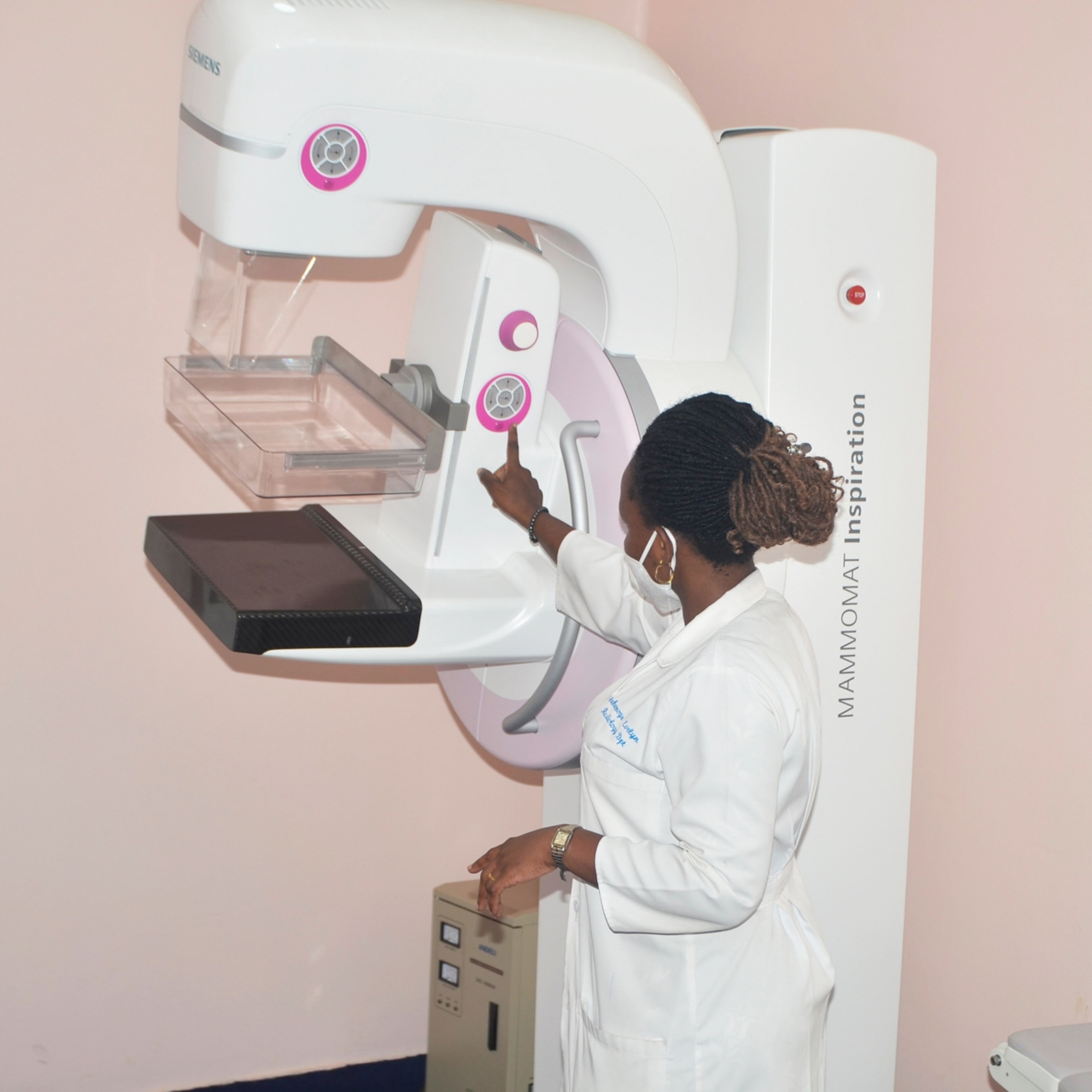
Endometriosis is common, incredibly painful—and often misdiagnosed. Why?
It can take years to get a diagnosis for this poorly understood disease—which is then often mistreated. But a powerful treatment may offer relief to many women.
By the time she was 16, Karin Gaudet-Asmus’s menstrual periods were so painful she frequently missed several days of school each month. In her early twenties, more symptoms appeared, including nausea, vomiting, bloating, diarrhea, and extreme fatigue. Doctors diagnosed these as allergies, irritable bowels, and polycystic ovary syndrome, and then prescribed medications that largely didn’t help.
Several years later while in law school, a sharp pain took root in her shoulder, which a physical therapist attributed to carrying too many books. In her thirties, Gaudet-Asmus had difficulty getting pregnant and then miscarried twice. Now a 39-year-old former lawyer in western Texas, it took a gallbladder infection two years ago to finally get the relief she sought. While preparing to have that organ removed at the Mayo Clinic in Phoenix, Arizona, Gaudet-Asmus was also correctly diagnosed as having endometriosis.
The disease, which is estimated to affect 11 percent of American people who are designated female at birth, occurs when tissue similar to that making up the uterine lining, or endometrium, grows inside the torso. These cysts or lesions can cause excruciating pain, especially around the time of menstruation, and, sometimes, infertility. Endometriosis affects people primarily during childbearing years because the tissue is sensitive to the hormone estrogen. In some cases, the lesions are superficial; in others, they grow deeply and abundantly, infiltrating one or more organs and crushing them.
Despite its prevalence, Gaudet-Asmus’s experience is common, with studies showing it takes seven to 10 years on average before women are correctly diagnosed. Experts say this may be starting to change, thanks to a growing body of research and a small but expanding army of surgeons with advanced training in minimally invasive gynecological surgery, known as MIGS.
In the two decades since a formalized national MIGS fellowship program was created, several hundred MIGS physicians have learned to examine patients with a tiny instrument called a laparoscope and use it to carefully remove unwanted tissue. Such advanced surgical skills are especially crucial for treating severe cases of a disease that can be very complex, says Olga Bougie, a MIGS-trained surgeon and researcher at Queen's University in Kingston, Ontario.
The six-hour operation to remove Gaudet-Asmus’s many endometrial lesions excised tissue from her abdominal wall and around her ovaries, appendix, large intestines, and diaphragm (the likely cause of the shoulder pain). Almost immediately, the symptoms that had long plagued her disappeared. Yet her relief was diluted by anger that the diagnosis and treatment was delayed. “This disease took so much of my life. I could have been doing so many things instead of lying in bed month after month,” she says.
Misinformation, ignorance, and unhelpful treatments
Endometriosis is routinely misdiagnosed even by gynecologists whose training is focused on reproductive-age people, says Iris Kerin Orbuch, a MIGS surgeon in Beverly Hills, California. One reason is that the main symptoms overlap with those of other diseases. Those with endometriosis often experience painful and heavy periods and pain during sex which, for example, can also occur with fibroids. Bloating, constipation, and fatigue can be symptomatic of irritable bowel disease.
Kerin Orbuch also blames longstanding physician attitudes that dismiss painful menstruation as normal. And for reasons that are still unclear, doctors often don’t consider endometriosis as a potential diagnosis, so they may assume the patient is exaggerating. “The women are told there is nothing wrong with them,” even though their constellation of symptoms is consistent with endometriosis, she says.
During basic gynecological training, doctors are taught some incorrect information about endometriosis, says Nicole Donnellan, a MIGS physician at the Magee-Womens Hospital affiliated with the University of Pittsburgh School of Medicine. For example, she learned that endometriosis lesions appear as “powder-burn black,” but in fact they can be red, yellow, white, or even clear. Many doctors also don’t know that a laparoscopic biopsy of the tissue is required to yield a definitive diagnosis.
It would help if doctors better understood the cause of endometriosis and why the disease is much more aggressive in some than others, both of which are unclear, Donnellan says. Current guidelines for doctors put out by the primary gynecological organization, the American College of Obstetricians and Gynecologists, posits several possible theories, including that endometrial cells are transported through blood or lymph nodes, or—an especially widespread belief—that they disperse when menstrual blood backs up into the body, a process known as retrograde menstruation.
Kerin Orbuch says the latter is especially unlikely, given that some develop the disease before puberty while others continue to have it after they stop bleeding in menopause. Further evidence from autopsies of some hundred deceased female fetuses identified early-stage endometriosis in half of them, indicating that the cells for the lesions are laid down before birth.
Surgery is effective for many patients
Once the disease is correctly diagnosed, doctors generally try to reduce levels of estrogen, primarily by prescribing birth control pills. In patients with mild cases, this may be enough to tamp down pain, Donnellan says. But more studies are needed to determine if this is truly effective, according to a review published in 2018 in the Cochrane Database of Systematic Reviews.
If hormone therapy does not work, doctors often recommend ablation, in which a laser or other heating device is used to destroy endometrial tissue. For mild disease in easy to reach areas, “ablation may be sufficient,” Cleveland Clinic experts concluded in a 2018 editorial in the Journal of Minimally Invasive Gynecology. However, after lesions are burned, they often regrow, says Megan Wasson, chair of medical and surgical gynecology at the Mayo Clinic, and Gaudet-Asmus’ MIGS-trained surgeon. “Endometriosis is almost like a weed. If you just burn the leaves, the root remains, so it will come back,” she says.
That is why Wasson and others consider an operation that removes all traces of the disease, known as excision, to be the gold standard. “At this point excision is the standard of care,” Wasson says. This surgery is preferential for those with advanced disease, known as deep infiltrating endometriosis, where the wayward tissue infiltrates or adheres to other organs. “It’s like superglue,” Donnellan says, which is why teams of surgeons specializing in the various organs are often needed to fully remove the sticky web.
Research in the past decade has begun to document excision’s effectiveness. One of the largest studies followed nearly 200 women who had either excision or the laser treatment of ablation. It found that after five years those who had the excision surgery had lower rates of pain during sex and less need for further medical treatments. However, a review of studies published in 2020 called for even larger studies before drawing firm conclusions.
One effort currently underway aims to compare the results of women with mild endometriosis having excision surgery with those given no operation or a placebo procedure in which they are operated on but no lesions are removed. This study will allow researchers to determine whether improvements are due to removal of the tissue, from natural pain fluctuations, or the influence of the mind on pain, says Henrik Marschall, a doctoral student at Denmark’s Aarhus University who is directing the research. Results are expected in a few years.
How excision surgery affects fertility in women who want children remains an open question, says Ted Anderson, past president of the American College of Obstetricians and Gynecologists and the group’s endometriosis expert. “With extensive surgery, there is a risk of collateral tissue damage and adhesion formation that might negatively impact fertility,” he says. In a small recent study, though, infertile women with severe endometriosis who had the surgery before undergoing in vitro fertilization had twice the success as those who went straight to the reproductive technology.
Not a cure for everyone
MIGS doctors and patient advocates have been working to raise the profile of endometriosis in the past few years. Kerin Orbuch is featured in a documentary, Below the Belt, scheduled to appear on PBS later this month. And the Facebook group Nancy’s Nook Endometriosis Education founded by Nancy Petersen, a retired nurse who worked with an excision pioneer, highlights excision surgery for its 170,000 members.
Even among those who get the best available treatment, however, the surgery is not always successful. While many people like Gaudet-Asmus experience vast improvement after a single procedure, others have more persistent disease and require repeated trips to the operating room.
Jami Carder is one example. A 51-year-old registered nurse in Yarmouth Port, Massachusetts, she had extensive excision surgery with a MIGS specialist in 2019 after decades of failed treatment with birth control pills and eventually a hysterectomy. A year later the pain returned, and she needed a second operation to remove new lesions around her colon and diaphragm.
Six months after that, the pain started creeping back in, and soon Carder was having excruciatingly painful bowel movements around the time of menstruation. Nonetheless, she is happy she had the two operations. “Before, I was in so much pain from my knees to my chest, and it’s not like that anymore. I’m able to function much better overall,” Carder says.
In a large population cohort study of 85,000 Canadian women, fully 20 percent required additional surgery after their first excision during the 16 years that researchers followed them. Only a few of the 10 percent who had had a hysterectomy required a follow-up operation. However, hysterectomy does not help those whose endometriosis doesn’t involve the uterus and so the pain can persist; furthermore, the removal of the uterus is a radical way to treat endometriosis and one not appropriate for women who want to become pregnant. Hysterectomies may be especially successful for relieving pain from a related condition, adenomyosis—where endometrial tissue infiltrates the uterine muscle walls—that often occurs in people who also have endometriosis, says Olga Bougie, the study’s lead author.
Even when they don’t require an additional operation, many with longstanding disease need extensive physical therapy or other treatments after the excision, to counteract years where endometrial tissue stuck to and deformed various organs and the pelvic floor. Others remain on medications that keep hormone levels suppressed.
The most important thing is for those with endometriosis is to talk to an expert to get the best treatment advice, Donnellan says. “It’s never wrong to seek out a MIGS surgeon, even if you ultimately don’t require surgery.” she says. “I sometimes refer to myself as the primary care provider of the pelvis.”








